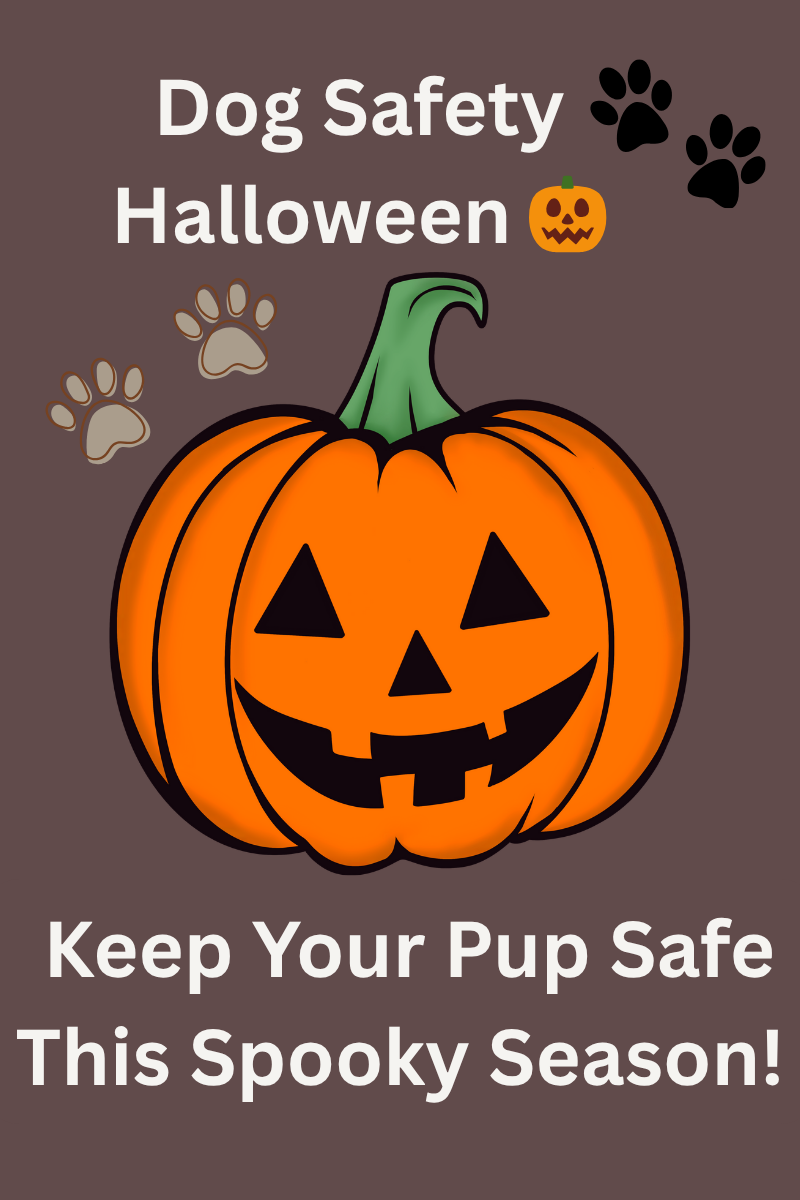
Introduction
Spooky season is here, and while Halloween is full of costumes, sweets, and fun for humans, it can pose unexpected risks for our pets. That’s why dog safety Halloween tips are so important. From tempting chocolates to noisy trick-or-treaters and dangerous decorations, the event can quickly turn stressful, or even hazardous, for dogs. With some preparation, you can make sure your pet enjoys the festivities without fear or harm.
Why Halloween Can Be Risky for Dogs
Halloween is a time of excitement, creativity, and community fun, but for dogs it can be confusing and overwhelming. From a pet’s point of view, strange sights, smells, and sounds can be frightening. Here are the main risks to watch out for:
- Food hazards: Chocolates, sweets with xylitol, raisins, and even wrappers can cause poisoning or blockages.
- Costumes and visitors: A stream of costumed strangers at the door can trigger anxiety or defensive behaviour.
- Decorations: Candles, glow sticks, and fake cobwebs can become fire, choking, or poisoning hazards.
- Noise and fireworks: Loud bangs, flashes, and unusual activity may lead to panic or escape attempts.
With awareness and planning, you can reduce these risks and keep your dog safe.
How to Keep Dogs Calm on Halloween Night
Halloween can be one of the noisiest nights of the year, with constant knocks, fireworks, and unfamiliar visitors. Dogs thrive on routine, so creating a calm environment is key.
Create a Safe Haven
Set up a quiet space with your dog’s bed, toys, and perhaps a jumper with your scent. Keep curtains closed and lights low to reduce stimulation.
Sound Therapy and Distraction
Mask outdoor noise with calming music or white noise. Food puzzles, chews, or interactive toys can help redirect attention.
Stick to Routine
Walk and feed your dog at the usual times. An earlier, longer walk helps burn energy and makes rest easier.
Manage the Doorway
Greeting trick-or-treaters outside or leaving sweets in a bowl reduces constant knocking. Keep your dog behind a closed door or baby gate to prevent escapes.
Comfort and Reassurance
Stay calm and steady, dogs pick up on your emotions. Calming aids like pheromone diffusers or anxiety wraps may also help. Speak to your vet if your dog struggles with severe anxiety.
By preparing in advance, you’ll help your dog feel reassured instead of rattled.
If your dog gets anxious with door knocks or trick-or-treaters, I’ve got you covered! Download my free “No Trick-or-Treaters” door poster to help keep your dog calm and stress-free this Halloween. Simply print and display it to politely let visitors know not to knock or ring the bell. Also available in black and white.
Toxic Halloween Sweets for Dogs
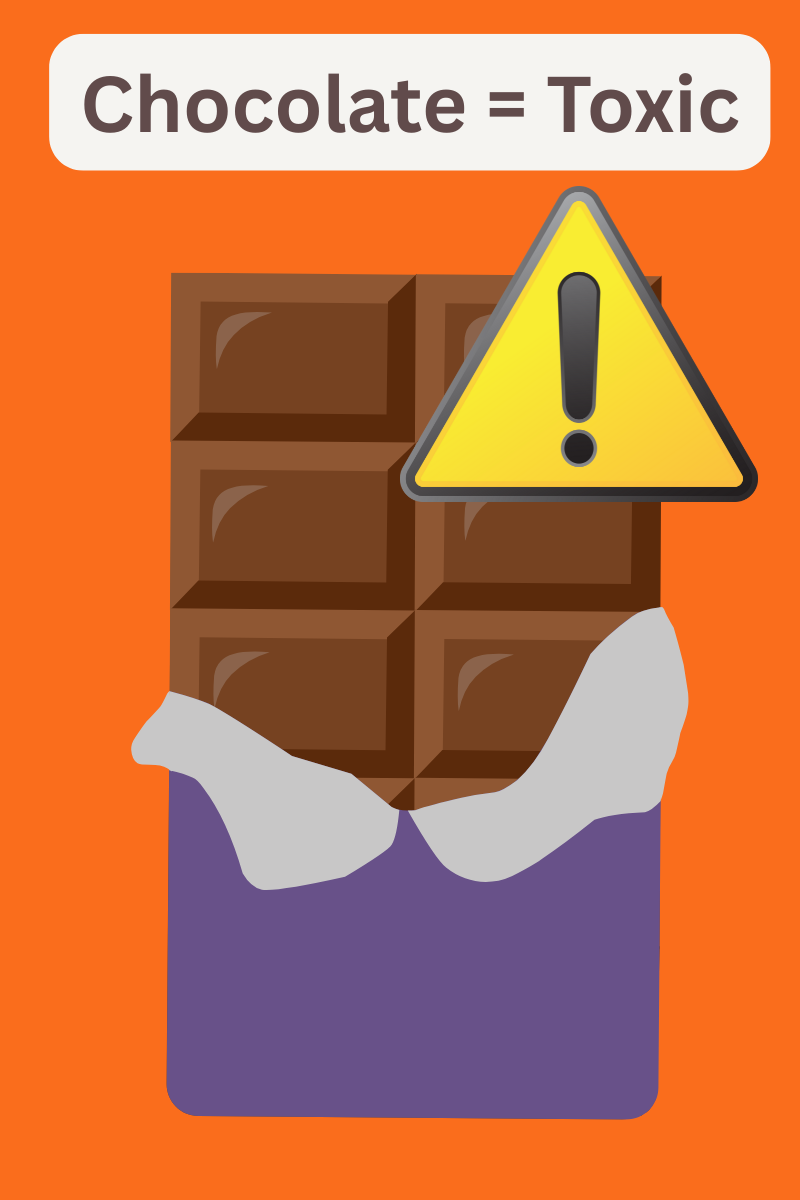
Chocolate, Xylitol, and Other Risks
Chocolate is one of the top causes of emergency vet visits in October. It contains theobromine, which dogs can’t process, and dark chocolate is especially dangerous. Sugar-free sweets, gum, and baked goods often contain xylitol, which can cause life-threatening drops in blood sugar or liver failure.
Raisins and sultanas, sometimes found in snack boxes, can trigger kidney damage even in small amounts. Wrappers, sticks, and plastic toys are choking or blockage hazards.
What to Do If Your Dog Eats Sweets
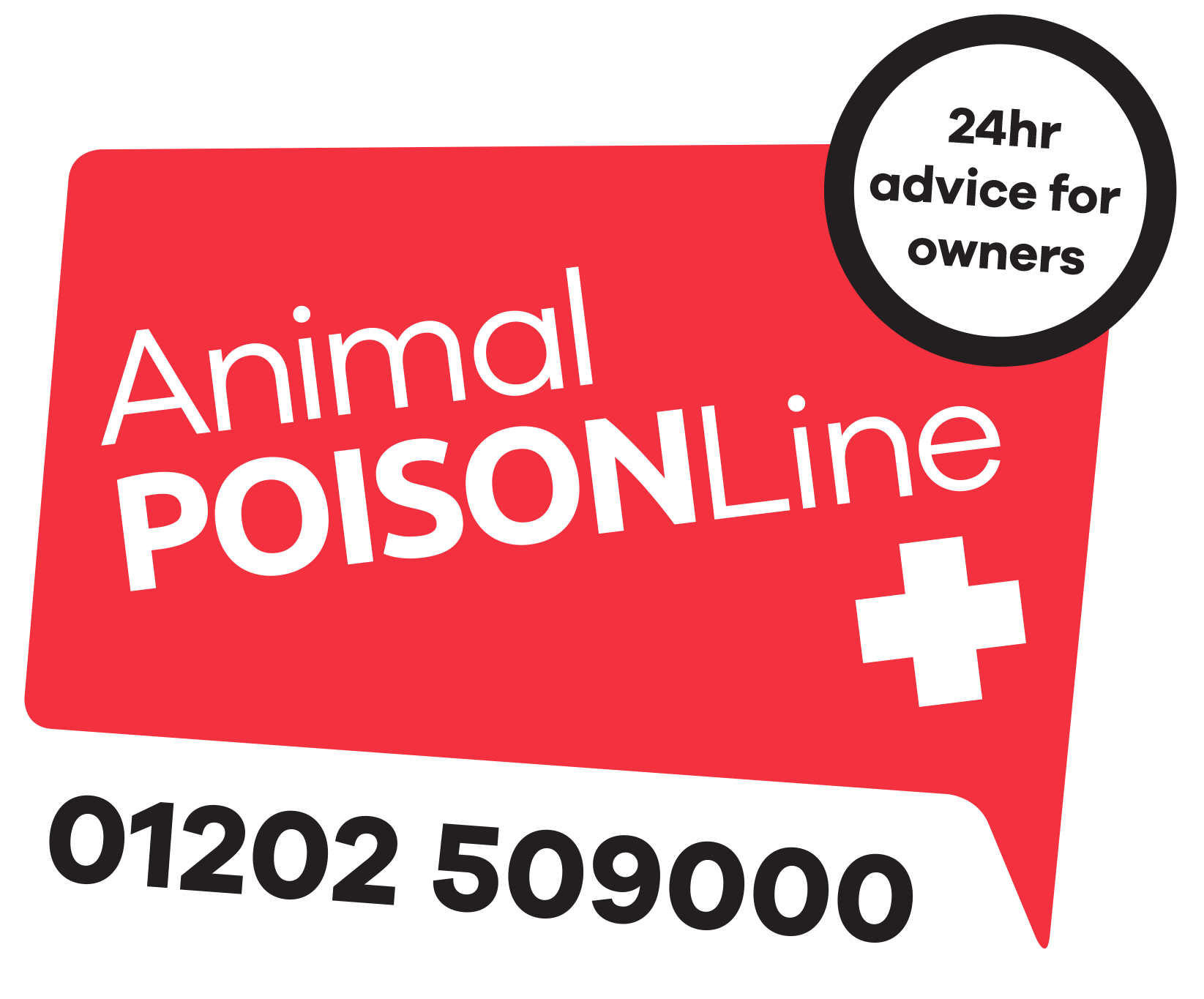
If you suspect your dog has eaten chocolate, xylitol, raisins, or wrappers, call your vet immediately. Don’t wait for symptoms, and don’t try to make them vomit without professional advice. In the UK, you can also contact the Animal PoisonLine for guidance. Bring packaging to the vet if possible, so ingredients can be identified quickly.
Safe Alternatives
Keep your dog included with safe, dog-friendly treats. Many pet shops stock Halloween-themed snacks, or you can make your own with pumpkin, apple (without seeds), or sweet potato. Healthy options like carrot sticks or chicken bites also work well. You can even swap edible treats for themed toys to keep your dog entertained.
With a little preparation, your dog can enjoy their own treats while avoiding dangerous sweets.
Safe Dog Walking on Halloween
Evening walks may be more stressful than usual, with crowds, costumes, and fireworks. A few adjustments will help keep outings safe.
- Walk early: Head out before dusk to avoid peak trick-or-treat time and reduce firework exposure.
- Use reflective gear: Collars, harnesses, or clip-on lights make your dog more visible.
- Stick to quieter routes: Give groups of children space, and avoid forcing your dog to interact if they seem nervous.
- Watch for hazards: Keep an eye out for dropped sweets, glow sticks, or candles on doorsteps.
- Secure lead and ID: Make sure your dog’s collar or harness fits well, and double-check ID tags and microchip details.
These small changes will help make your walk calm, safe, and enjoyable.
Choosing Safe Dog Costumes

Are Halloween Costumes Safe for Dogs?
Halloween Costumes and Safety for Dogs… Not all costumes are suitable for pets. Outfits that restrict movement, breathing, or vision should be avoided, and small parts like sequins or buttons can become choking hazards. Signs of stress, such as excessive panting, shaking, or trying to remove the outfit, mean your dog isn’t comfortable.
Comfortable Alternatives
If your dog dislikes costumes, try a festive collar, bandana, or reflective accessory. These keep your pet involved without discomfort. A themed toy or Halloween treat is another fun alternative. Comfort should always come first, after all, a happy dog is the best accessory.
Halloween Decorations and Pet Hazards
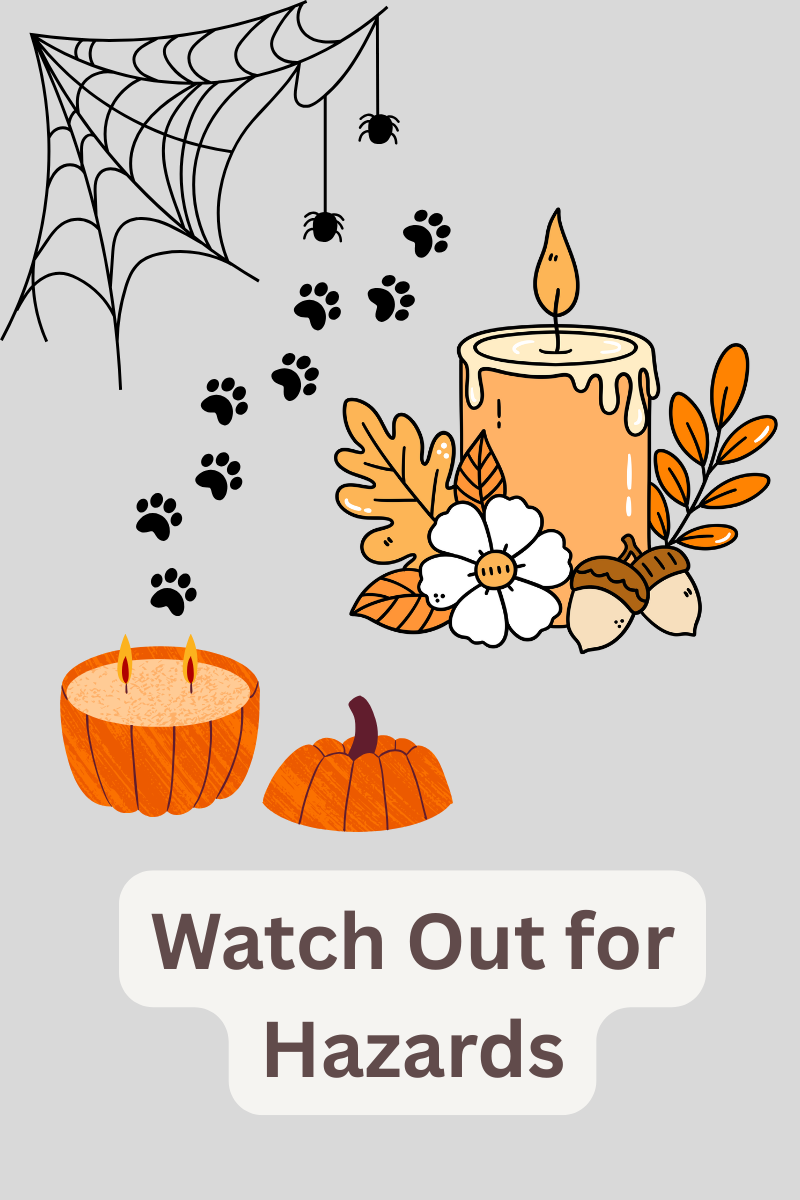
Decorations add festive fun, but many aren’t pet-friendly.
- Candles in pumpkins can be knocked over, risking burns or fires. Battery-powered LED candles are a safer option.
- Glow sticks can cause drooling or stomach upset if chewed.
- Fairy lights and cables may lead to electric shocks if bitten.
- Fake cobwebs and plastic ornaments can entangle dogs or cause choking if swallowed.
- Outdoor displays with wires or inflatables should be kept secure.
Think from your dog’s level: if they can reach it, they might chew or knock it over.
Healthy and Dog Safe Halloween Alternatives
Halloween doesn’t have to be all about sweets.
- Dog-friendly treats: Pet shops stock Halloween snacks free from toxic ingredients.
- Homemade bakes: Use dog-safe ingredients like pumpkin, oats, or apple.
- Healthy snacks: Carrot sticks, cucumber slices, or cooked chicken are safe options.
- Toys instead of treats: A new chew toy or puzzle feeder provides festive fun without the sugar.
This way, your dog feels included while staying safe.
Emergency Vet Advice for a Dog Safe Halloween
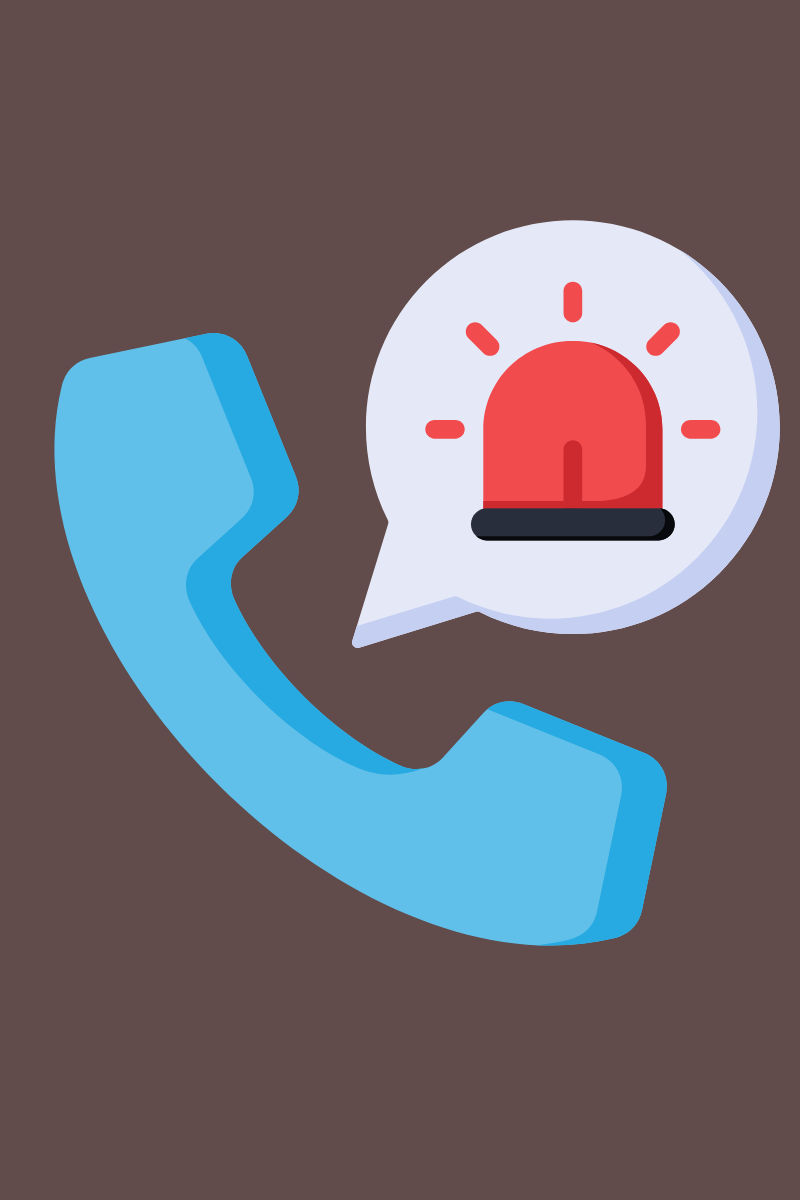
Halloween is one of the busiest nights for vets. Knowing what to do in an emergency could save your pet’s life.
Recognise an Emergency
Seek urgent help if your dog shows vomiting, diarrhoea, collapse, seizures, excessive drooling, or breathing difficulties.
Act Quickly
Call your vet straight away. In the UK, you can also contact the Animal PoisonLine. Don’t try home remedies without advice. Take any packaging with you.
Plan Ahead
Save your local emergency vet’s number, know where they’re based, and keep insurance details handy.
Stay Calm
Dogs respond to your emotions. Staying composed helps keep them more settled while you get them treatment.
Preparation gives you peace of mind that help is available if needed.
FAQs About Dog Safety on Halloween
Q: Can dogs eat Halloween chocolate or sweets?
A: No. Chocolate and xylitol are highly toxic, and wrappers can cause blockages. Stick to dog-safe alternatives.
Q: How can I keep my dog calm during trick-or-treating?
A: Create a quiet space, play calming sounds, and distract with toys. Speak to your vet about calming aids if needed.
Q: Are Halloween costumes safe for dogs?
A: Only if they don’t restrict breathing, vision, or movement. If your dog is uncomfortable, try a festive bandana instead.
Q: What should I do if my dog eats something dangerous?
A: Call your vet immediately and take any packaging with you. Early treatment is vital.
Q: How do I keep my dog safe on Halloween walks?
A: Walk earlier, use reflective gear, and avoid crowded streets. Always keep your dog on a secure lead.
Q: What about fireworks around Halloween?
A: Close windows and curtains, use calming sounds, and ensure ID tags and microchips are up to date.
Click here for some good advice from the Blue Cross on how to desensitise your dog to fireworks.
Halloween can be fun for pets too, if you plan ahead.
Conclusion: Putting Dog Safety First This Halloween
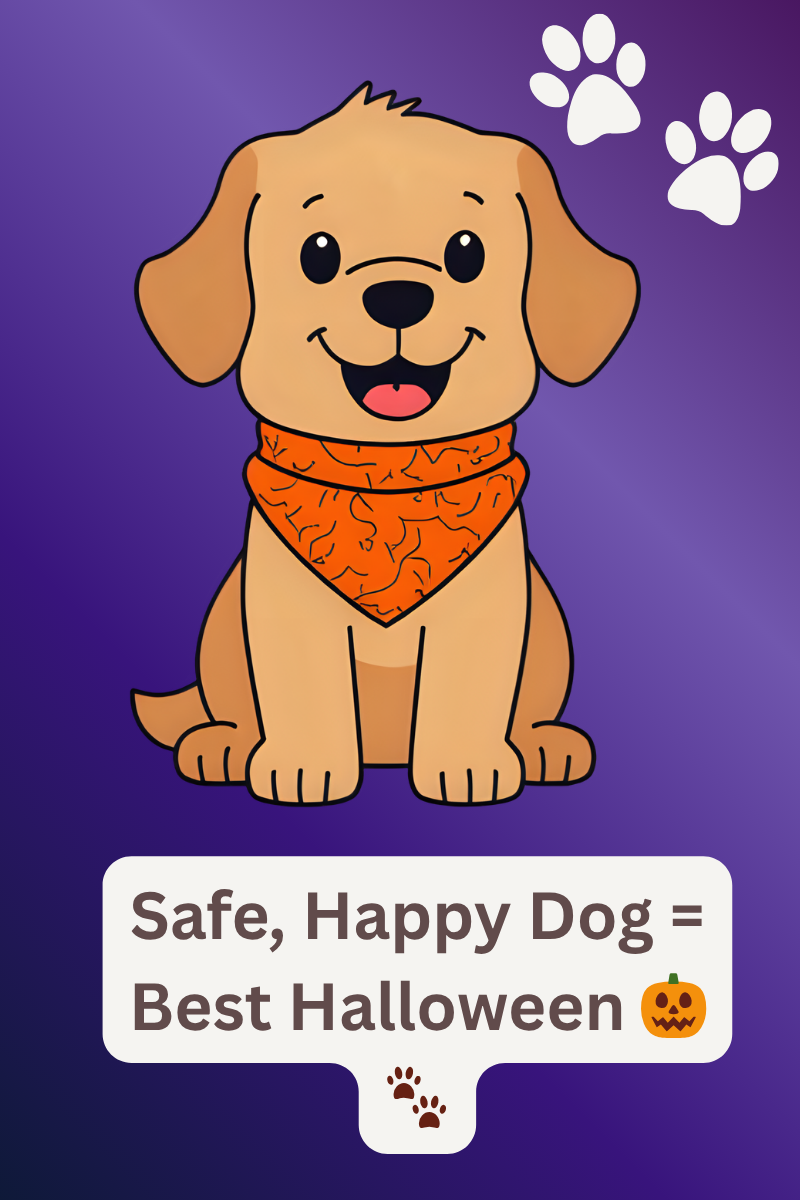
Halloween should be a night of fun, not fear, for the whole family, including your dog. By focusing on dog safety Halloween strategies, you can avoid the biggest risks: sweets, costumes, decorations, noise, and fireworks.
Plan walks earlier, create a calm space indoors, offer safe alternatives to sugary treats, and keep vet details close at hand. With these simple steps, you’ll protect your dog’s wellbeing and enjoy a stress-free night.
If you found this guide helpful, share it with other pet owners, subscribe for more pet safety tips, or explore my related seasonal care articles. A safer Halloween for dogs starts with informed owners like you.
I’m part of a blog circle of other pet professionals. Click here to read ‘K9 and Kats’ tips for a safe Halloween in New Zealand.
